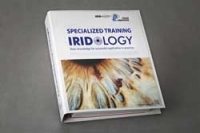In the first chapter, the participants obtain a historic overview of the origin and development of this method. Anatomy, genetics, shape and embryonal development of the eye and iris are shown and theses about the coming-into-being of the iris signs are regarded more closely in consideration of the time factor.
The various signs and changes of the iris and its surroundings are presented step by step and their origin and relation to the organic systems are explained. The significance of the various combinations of iris indications is distinguished and the multiple forms of appearance are differentiated.
The Iridian Constitution Doctrine will be explained in detail and in relation to the Clinical Constitution Doctrine. In addition, the origin, features, apparition forms and meaning of the iridian dispositions (arrangements) and diatheses are explained so that they can be exactly determined and differentiated.





